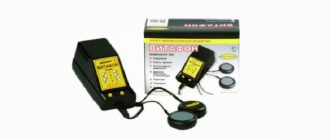X-ray endovascular embolization of prostate arteries (EAP) is an operation to block blood vessels, performed with the least intervention in the body. It has a minimal number of contraindications and a short recovery period compared to other treatment methods. Improvement occurs in 90% of cases.
What is the operation
Embolization of prostate vessels is an operation that results in blockage of part of the vessels supplying the prostate gland. After it is carried out, the inflamed organ decreases.
Applicable for:
- no changes during drug treatment;
- benign hyperplasia of the 3rd degree (volume more than 80 cubic cm);
- prohibition of other types of operations;
- difficulty urinating and increased amount of residual urine.
Embolization is justified in case of organ injuries. With its help, it is possible to cope with bleeding accompanying injury and restore the functioning of the prostate gland.
Embolization for prostate cancer helps to limit the supply of nutrients to diseased cells. This helps stop the growth of the tumor and slow down the progression of the disease.
Advantages and disadvantages
Embolization of the prostate arteries has a great advantage over all other methods:
- Produced with minimal tissue damage.
- There is no long recovery period.
- No dressings required.
- There is no need to receive physical therapy treatment.
- EAP can be performed on patients with cardiovascular diseases or diabetes mellitus.
As a result of the operation, the following occurs:
- reduction in the size of prostate adenoma by almost 2 times;
- restoration of normal prostate size;
- urination frequency is restored;
- false urges disappear;
- the PSA (prostate specific antigen) level decreases.
The disadvantage of the method is its high cost.
Contraindications
Contraindications to embolization of prostate arteries are:
- The presence of floating blood clots in the veins of the lower extremities.
- Allergy to iodine-containing drugs.
- Deviations in the development of the iliac vessels.
- Infectious diseases.
- Chronic pathologies of internal organs at the last stage.
- Bronchial asthma 3-4 degrees.
- The recovery period after a heart attack or stroke.
Preparation
Embolization of prostate adenoma is a planned operation and requires a preparatory period.
First of all, you need to undergo a diagnostic examination:
- laboratory tests of urine and blood (PSA test, biochemistry, general analysis);
- Ultrasound of the prostate and circulatory system;
- histological studies of tissues;
- study of the urination process (speed, volume, other parameters);
- electrocardiogram;
- X-rays of light.
If an infection or bacteria is detected, it is necessary to undergo a course of antibiotic treatment.
Then you need to undergo a test that determines the body's reaction to the contrast agent and anesthesia.
Before the operation, it is recommended to perform a cleansing enema and shave the hair in the groin.
Immediately before embolization, the patient is given painkillers and sedatives, and a urinary catheter is installed.
Carrying out
EAP is carried out in an operating room equipped with special devices necessary to obtain images of the condition of the arteries. Superselective embolization of prostate arteries does not involve blockage of all vessels and is performed in several stages:
- When a patient arrives on the operating table, the equipment necessary to obtain data on the condition (pressure, oxygen content in the blood, ECG) is connected to it.
- After local anesthesia is administered, a puncture is made on the thigh and a contrast agent is injected through the catheter. With its help, the location of the vessels supplying the prostate and their condition are determined.
- After identifying the sources of blood supply, a special medical plastic is introduced through the catheter, which clogs the blood vessels.
- The contrast agent is then reinjected to determine effectiveness.
- The sensors and catheters are removed, and the incision is sutured.
- The surgeon then applies pressure to the catheter insertion site for 10 minutes to prevent hematoma formation. A special device is applied, which subsequently applies pressure to the puncture site.
Possible complications
Embolization of the prostate arteries can cause some complications:
- hematoma formation at the catheter insertion site;
- urinary disturbance;
- pain when urinating in the lower abdomen.
Side effects after embolization of prostate arteries do not require special treatment and disappear within a few days:
- If urination is impaired, a catheter is placed for several days to remove urine.
- Anti-inflammatory and painkillers are prescribed to relieve pain.
- To get rid of a hematoma, absorbable ointments are prescribed.
Recovery period
After surgical intervention for arterial embolization, rapid recovery occurs. The patient is discharged on the same day after recovery from anesthesia.
Sometimes the patient is asked to stay in the ward until the next day to monitor the urination process.



